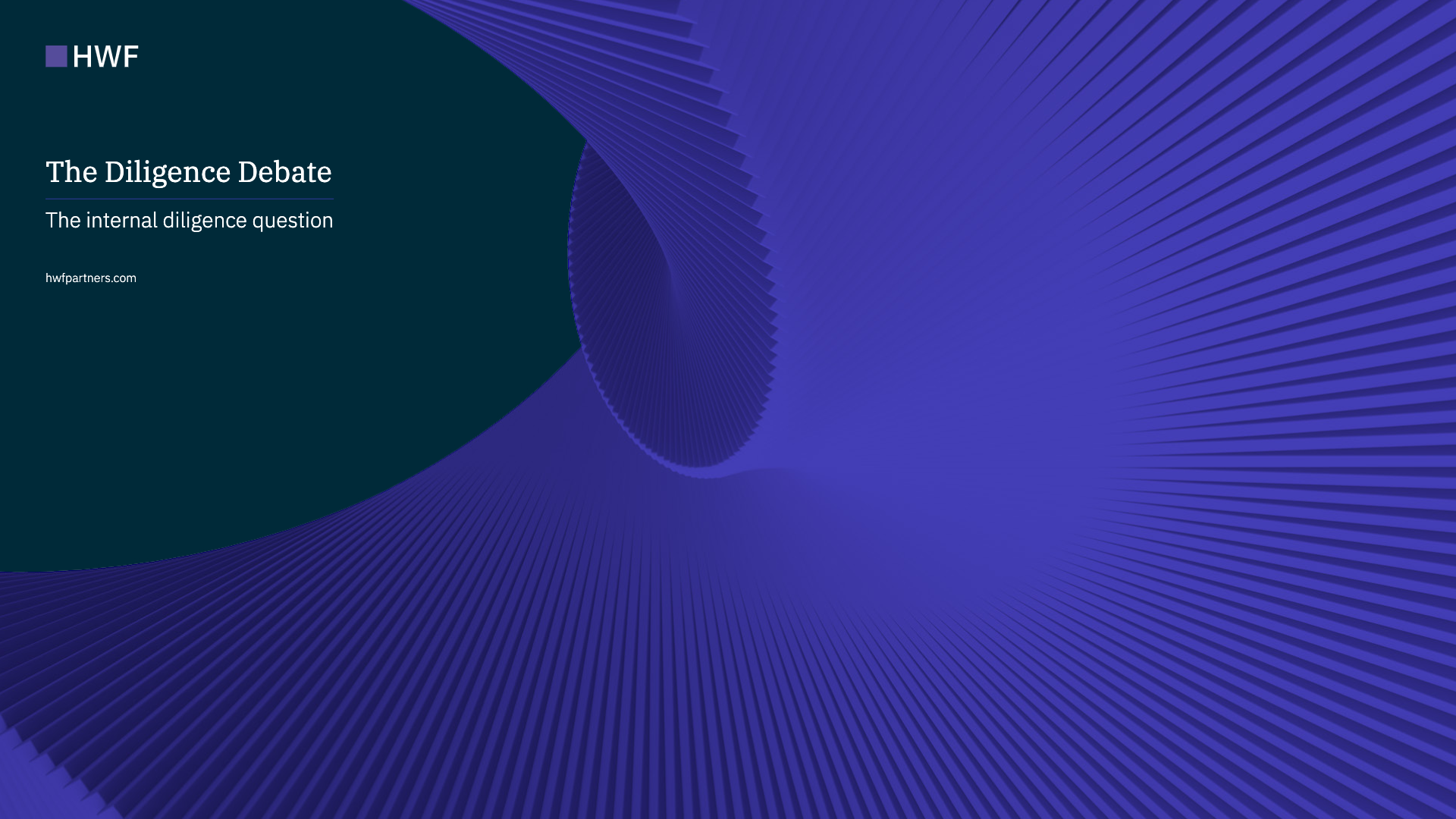The Diligence Debate – The internal diligence question
HWF are increasingly being asked whether insurers will accept internal DD when underwriting a W&I policy.
Traditionally, insurers have been restricted by obligations to underlying capacity providers who require underwriters to have access to external third-party DD materials when assessing risks. Certain insurers have also historically experienced a higher claims ratio on transactions for which significant portions of the DD process were conducted in-house. Therefore a limited number of insurers were historically able to underwrite transactions where the DD was done largely, or wholly, in-house.
However, given the increase in the number of both large corporates (who have significant M&A capabilities and track records as well as highly qualified internal teams) and specialist dedicated sector investors (such as renewable and infrastructure funds) using W&I insurance, insurers and their underlying capacity providers have become more welcoming of internal DD processes. To achieve a comparable result to a transaction with external DD reporting, it is imperative that insurers can underwrite the transaction in a similar way and take the same degree of risk analysis from the internal reporting.
The key principles insurers will focus on when considering internal DD are:
- The team
Who has carried out the work and are they qualified / do they have relevant experience (in-house or externally) to do that work? - Scope
Does the scope extend to what would be looked at if a third-party provider was undertaking the exercise? Any internal reports will need to look at the historic risks in the target business to which the warranties relate, rather than focusing on forward-looking benefits such as the commercial, synergistic or operational efficiencies resulting from a proposed acquisition. That said, typically it will be easier for DD scopes to be refined in order to pick up insurer comments during underwriting in the event that internal DD is being carried out. If different DD workstreams are being carried by internal and external parties, insurers will also look at alignment between the internal and external scopes to ensure risk areas are being fully reviewed and not falling in the gaps between scopes - Materials
Does the process include a review of all relevant materials, and what proportion of the materials in the data room have been reviewed? Does the work include relevant Q&A and follow up with the sellers and/or target management? - Reporting
Is there objective analysis that bottoms out the risk profile of issues, and are the findings and conclusions drawn as to the materiality of issues or potential remedies considered? Insurers will take comfort from exposures being identified which reinforces that an appropriate process has been carried out. Particularly on the tax side, insurers will find it helpful to see some form of debt-like items schedule which shows how findings have fed through to the wider transaction structure - Format
Insurers will be focused on content over form, so reporting by email or in internal memos for example can be fine provided the materials provide analysis and recommendations rather than simply reporting on facts and discussions. That said, we would always recommend replicating the “look and feel” of an external report where possible.
How can HWF assist?
1. Whilst in rare instances it has been possible to structure solutions in the absence of formal reporting, it usually leads to poor results. We can assist by understanding what the tangible output of the internal workstreams will be and advising on any changes that can be made (in some cases cosmetically) to assist insurers in their review and improve the cover position.
2. In advance of the internal report being prepared we can review scopes and advise on potential gaps in the usual way. In addition, we would look to share DD scopes, team bios, indices of the documents reviewed and Q&A with insurers to allow them to get comfortable with the exercise and flag any concerns or highlight any gaps.
3. We can assess the opportunity for integration of smaller or more focused internal workstreams into internal and external reporting. Importantly, this can be relevant to specific DD areas around plant & machinery, stock, IT, IP and insurance.
4. Our aim is that every insured that carries out the DD internally (in whole or in part) has the knowledge of the insurer’s requirements to enable them to get coverage comparable to a DD exercise conducted using external provider
Key Takeaway
Internal DD is not a bar to obtaining W&I insurance. HWF frequently advise clients who use internal reporting and obtain cover commensurate with cover we would achieve had external DD been conducted. Early engagement with HWF will be important in order that we can understand the scope and form of reporting and ensure cover reflects a buyer’s expectations


